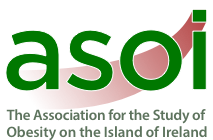A casein hydrolysate protects mice against high fat diet induced hyperglycemia by attenuating NLRP3 inflammasome-mediated inflammation and improving insulin signaling
- Categories: Animal Studies, Basic Science, Metabolic Health
Type Article
Journal Article
Authors
N. P. Healy; A. M. Kirwan; M. A. McArdle; K. Holohan; A. B. Nongonierma; D. Keane; S. Kelly; L. Celkova; C. L. Lyons; F. C. McGillicuddy; O. M. Finucane; B. A. Murray; P. M. Kelly; L. Brennan; R. J. FitzGerald; H. M. Roche
Year of publication
2016
Publication/Journal
Mol Nutr Food Res
Volume
60
Issue
11
Pages
2421-2432
Abstract
SCOPE: Activation of the nod-like receptor protein 3 (NLRP3) inflammasome is required for IL-1β release and is a key component of obesity-induced inflammation and insulin resistance. This study hypothesized that supplementation with a casein hydrolysate (CH) would attenuate NLRP3 inflammasome mediated IL-1β secretion in adipose tissue (AT) and improve obesity-induced insulin resistance. METHODS AND RESULTS: J774.2 macrophages were LPS primed (10 ng/mL) and stimulated with adenosine triphosphate (5 mM) to assess NLRP3 inflammasome activity. Pretreatment with CH (1 mg/mL; 48 h) reduced caspase-1 activity and decreased IL-1β secretion from J774.2 macrophages in vitro. 3T3-L1 adipocytes cultured with conditioned media from CH-pretreated J774.2 macrophages demonstrated increased phosphorylated (p)AKT expression and improved insulin sensitivity. C57BL/6JOLaHsd mice were fed chow or high fat diet (HFD) for 12 wk ± CH resuspended in water (0.5% w/v). CH supplementation improved glucose tolerance in HFD-fed mice as determined by glucose tolerance test. CH supplementation increased insulin-stimulated pAKT protein levels in AT, liver, and muscle after HFD. Cytokine secretion was measured from AT and isolated bone marrow macrophages cultured ex vivo. CH supplementation attenuated IL-1β, tumor necrosis factor alpha (TNF-α) and IL-6 secretion from AT and IL-1β, IL-18, and TNF-α from bone marrow macrophages following adenosine triphosphate stimulation ex vivo. CONCLUSION: This novel CH partially protects mice against obesity-induced hyperglycemia coincident with attenuated IL-1β secretion and improved insulin signaling.
